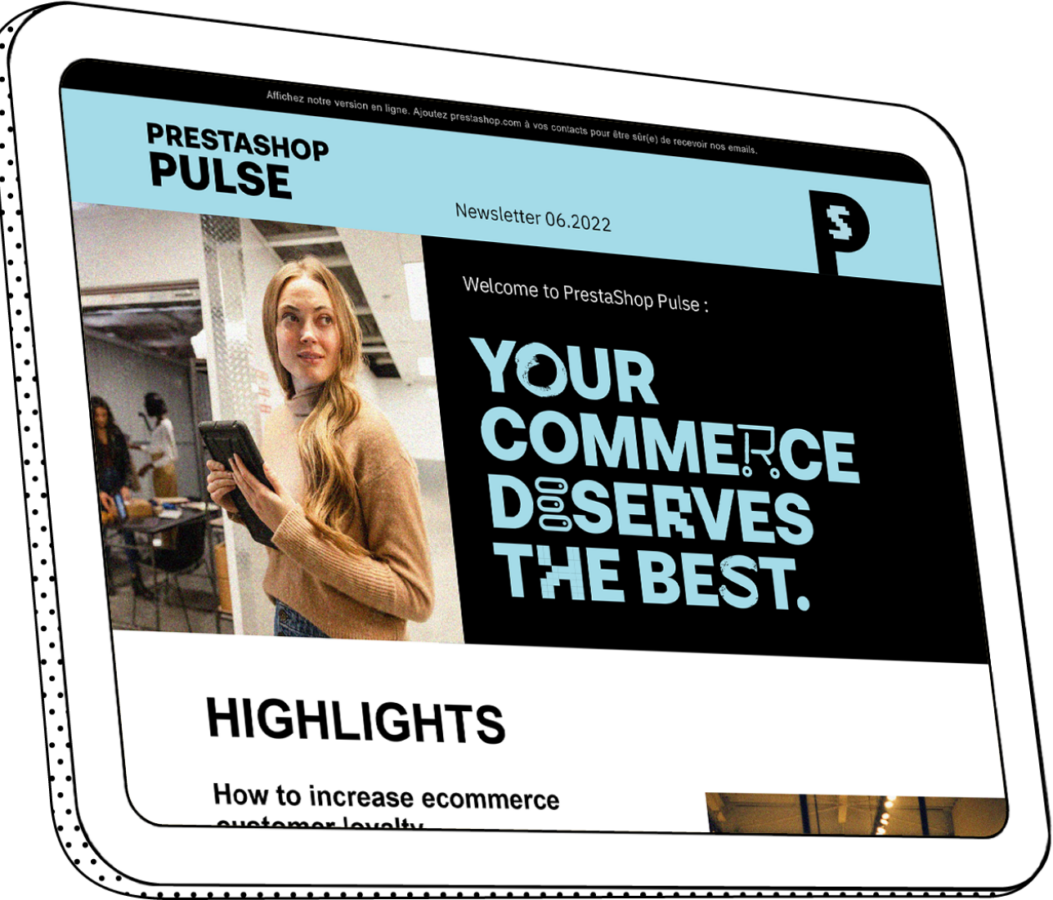
Email Marketing 2020: All you need to know
Email marketing is the most profitable direct marketing tool, capable of generating up to 30 times your initial investment. This makes it a vital pillar of any digital marketing strategy. Failure to include email marketing into your digital marketing strategy would be unwise, having the potential ROI in mind. With an ROI of 42:1, email marketing is more useful than ever, outperforming other channels by a long shot. Perhaps this is why email marketing is ranked in the Top 3 of CMO's preferred investment destinations for several years in a row.
If you're looking to set up a workflow capable of handling the rising demand for emails in 2020 and beyond, you can no longer afford one that's not optimized every step along the way.
Brands successfully employing email marketing tools have found ways to automate wherever it's possible. It boosts productivity, leaves less room for errors, saves time and money.
Let's dig into email marketing trends of 2020 that could be easily implemented into your eCommerce business and, more importantly, help it grow.
Tip #1. Abandoned Cart Marketing
The lack of follow up here means millions of dollars of revenue are lost every year. Not only from the items that your customers need right away but also from repeated purchases, they would possibly make over time (they did put them into the shopping cart after all!). Our partners and friends from the CM Commerce reckon up to 12% of abandoned carts could be recovered with personalized retargeting campaigns. Engaging these visitors with useful email marketing sequences that would help to maximize revenue at a marginal cost looks an obvious choice.
Speaking data, abandoned cart automation emails result in an average 4.64% conversion rate, compared to 0.17% of a regular newsletter. Some estimations claim that 45% percent of all abandoned cart emails are opened. More than that - fifty percent of all clicks into the personalized links in them result in purchases (providing users are offered reasonable incentive). In some cases, that would be a simple reminder; in others - the one-off discount or coupon. Marketers should take care to understand their customers' behavioral patterns and motives to act one or another way. These can be reduced to the most common scenarios and subsequently automated to minimize burden and eliminate human errors. You'd be surprised to find out how much can be achieved by using the right tools!
Below is an example of how the CM Commerce module could send automated emails triggered by various events.
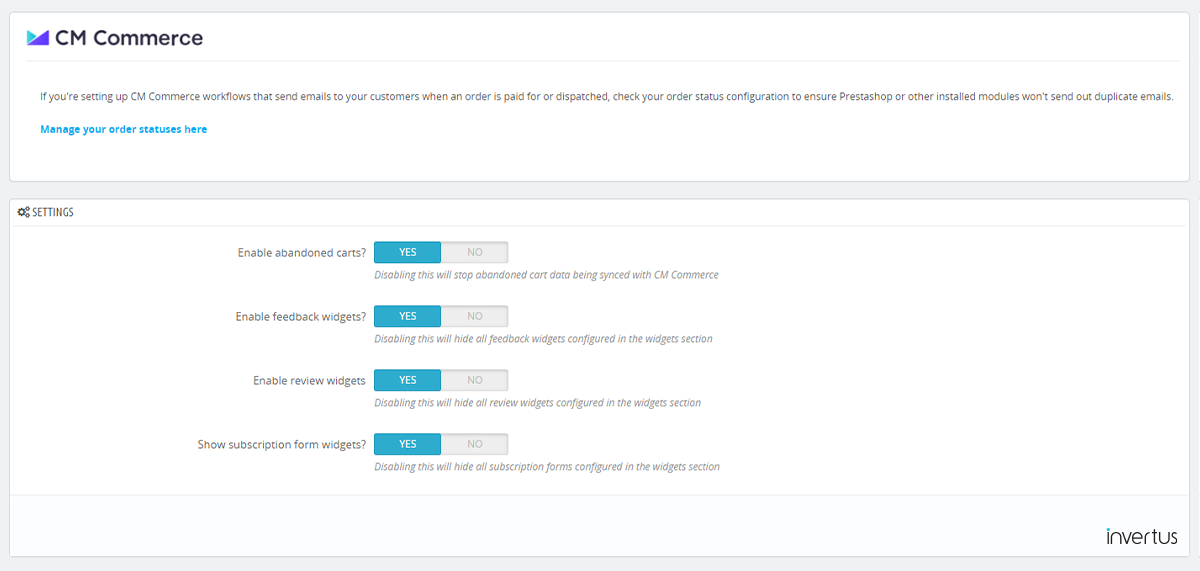
Source: CM Commerce module
If you still haven't started using abandoned cart emails, we believe that 2020 could be a great time to optimize your conversion.
Tip #2. Customers' Personalization & Segmentation
You should start with the fact that email marketing is your most measurable channel. You can not only measure overall campaign performance, like open, click-through, and conversion rates, but it also gives you a glimpse into each subscriber's behavior and preferences.
Companies that have resisted the personalization wave might find their reliance on a one-size-fits-all email to block them out of the mailbox as customers grow more uninterested in their messages.
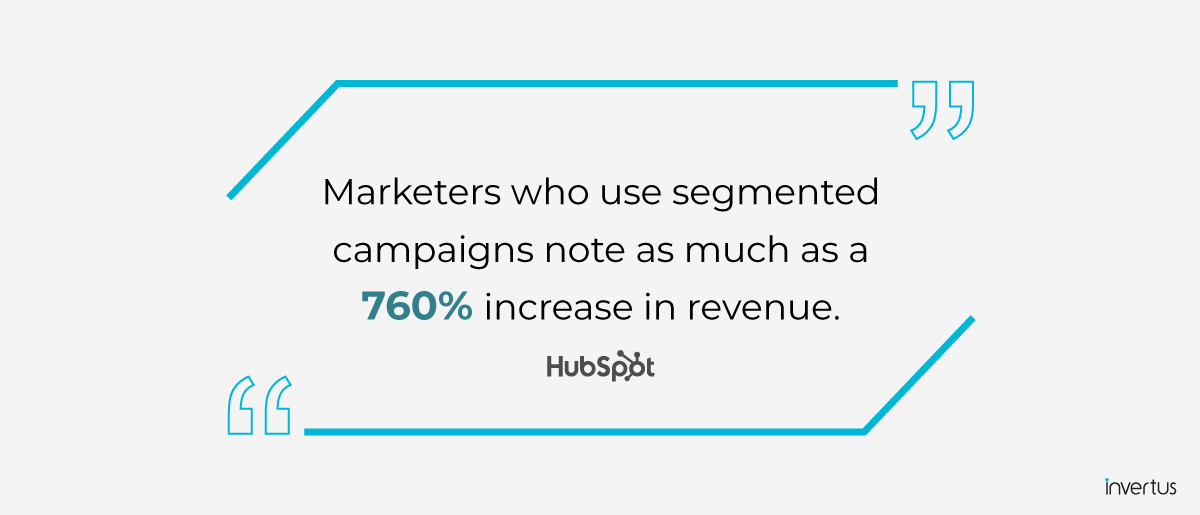
Source: HubSpot
With the help of newly developed email marketing tools and metrics at your disposal, you could send more relevant messages by personalizing them through targeted and triggered messaging based on interests, preferences, behavior, and profiles.
Tip #3. Follow Up Emails
Using automation tools, you can easily design and implement impressive customer journeys based on triggered events. According to research by Campaign Monitor, this kind of emails tend to have much higher opening rates reaching 45.70%, on average, and a substantial click-to-open rate of 23.52%.
Here are some examples which include triggered journeys:
- Welcome emails.
- Onboarding sequences.
- Thank you, emails.
- Transactional emails.
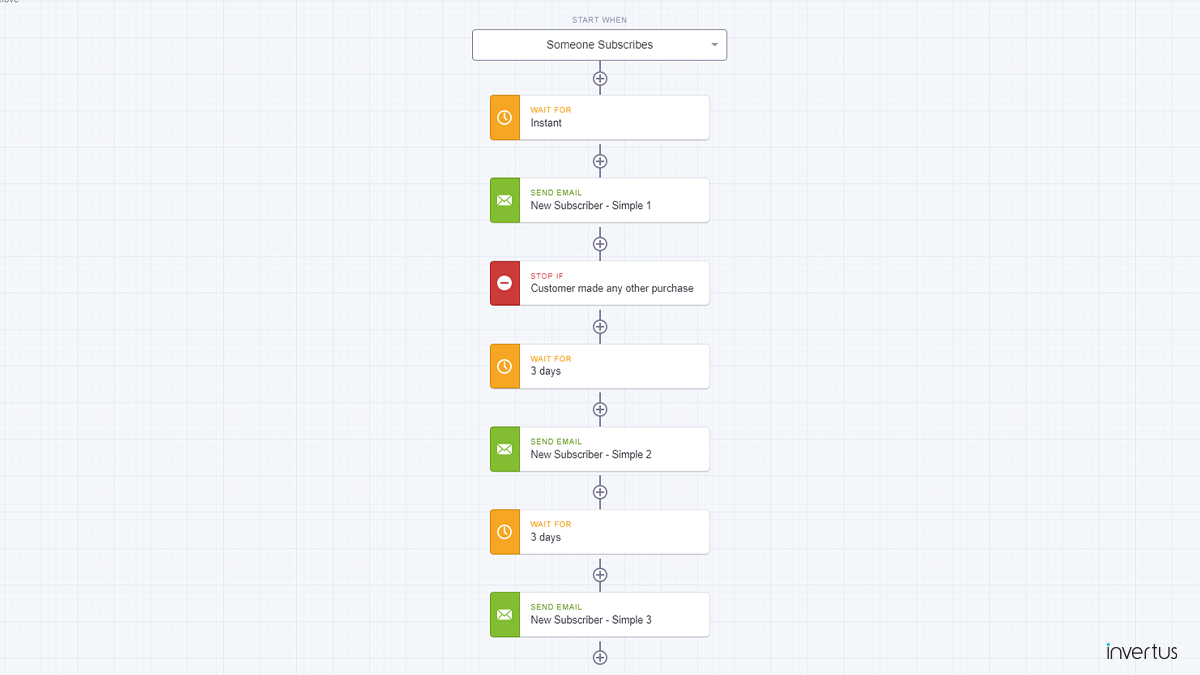
Source: CM Commerce module
Triggered emails could be used not only to stimulate purchases when the stocks are running out but also to include discount codes that could be used as a one-time purchase. They can help you to shape customers' expectations and general alignment between the customer and your store.
Tip #4. Social Proofs
A recent finding by Stackla indicates that 79% of people agree that their purchasing decisions are influenced by user-generated content (UGC). So putting UGC such as Instagram photos, reviews, videos with products' usage will catch users' attention. And most importantly, it will help your customers trust your brand by seeing others using the products and, finally, buying it. Based on Spiegel & Medill's research, displaying the reviews can increase sales by 270% on average. Sounds good, doesn't it? We see no reason why social proof could not be integrated into the email newsletters regularly sent to your customer base.
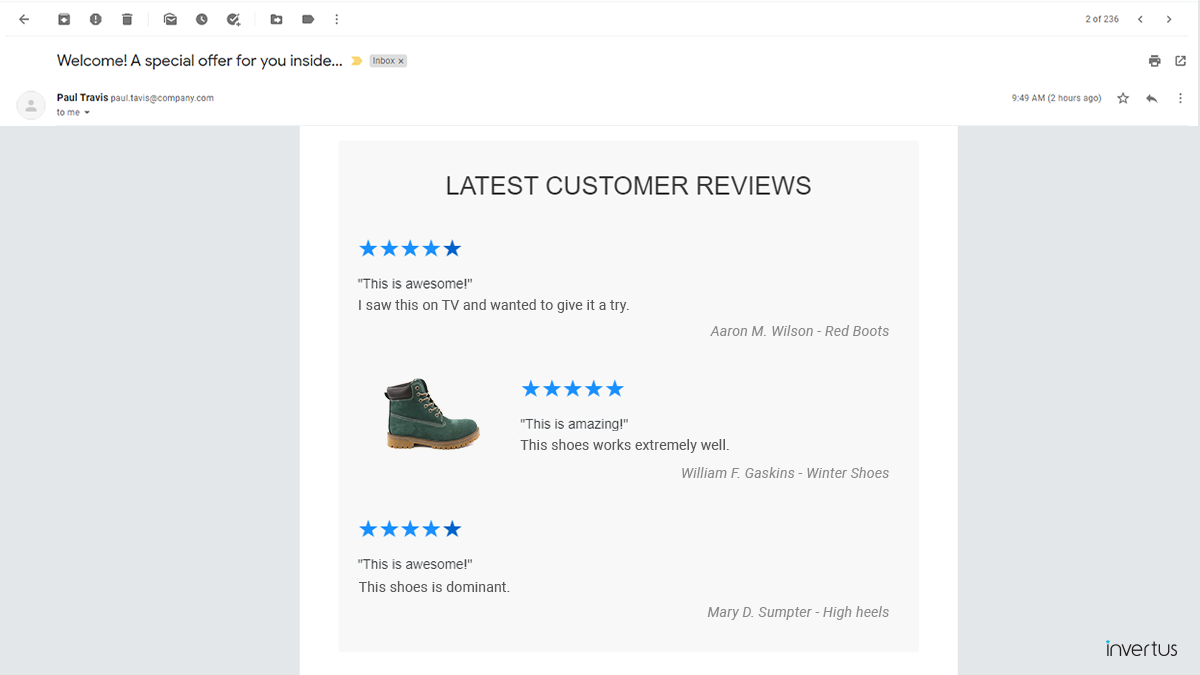
Source: CM Commerce module
Having behavior metrics and relevant customers' information will help you design highly personalized emails with user-generated content and product recommendations.
Tip #5 Creating an efficient email marketing automation takes time
To be successful in 2020 and beyond, businesses can no longer afford to stay in their channel silos because that's not how your customers experience the brands. While a steady email flow will be the foundation of a successful marketing organization, the sophisticated integration with other channels will set mediocre email marketing programs apart from the outstanding ones. Although the general rule of thumb leads you to adopt the earlier described tactics and tools, customers expect much more than that: the unique, personalized, and relevant interaction. Something that can't be developed overnight. Take care to book enough time for lots of testing!
Seamless integrations enable a smooth flow of data and power-efficient workflows — and that's the secret for email marketing success in 2020 and beyond.
